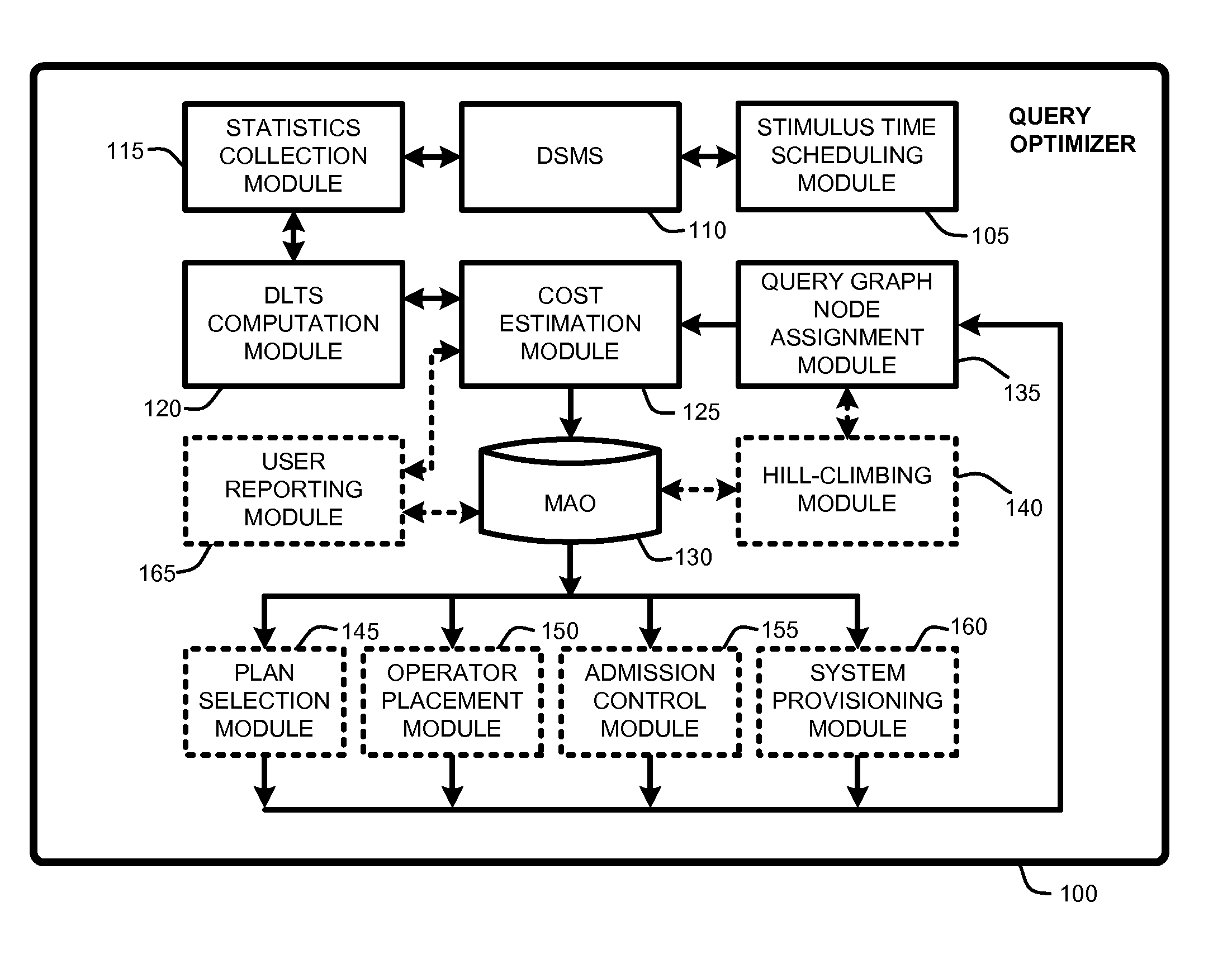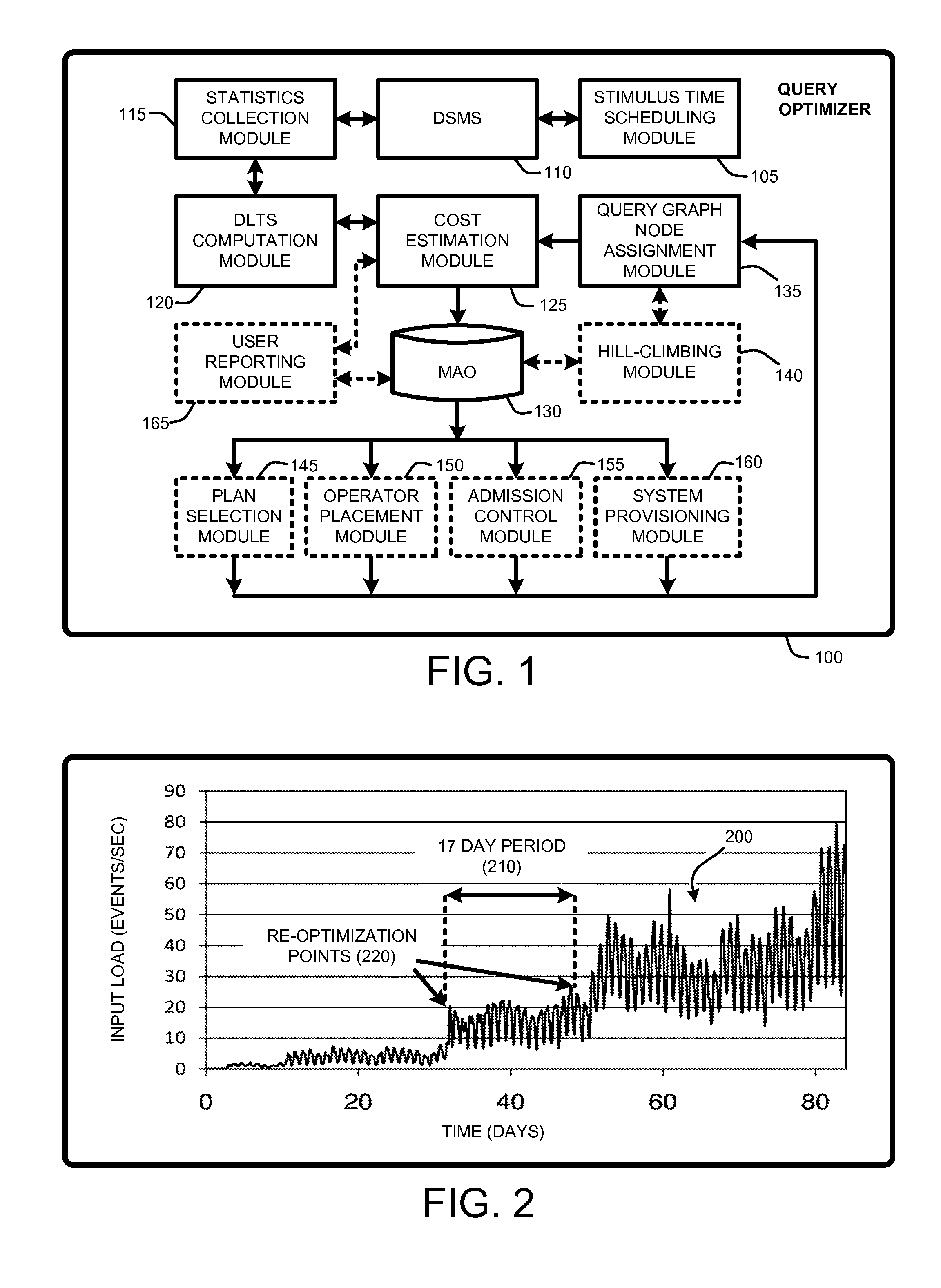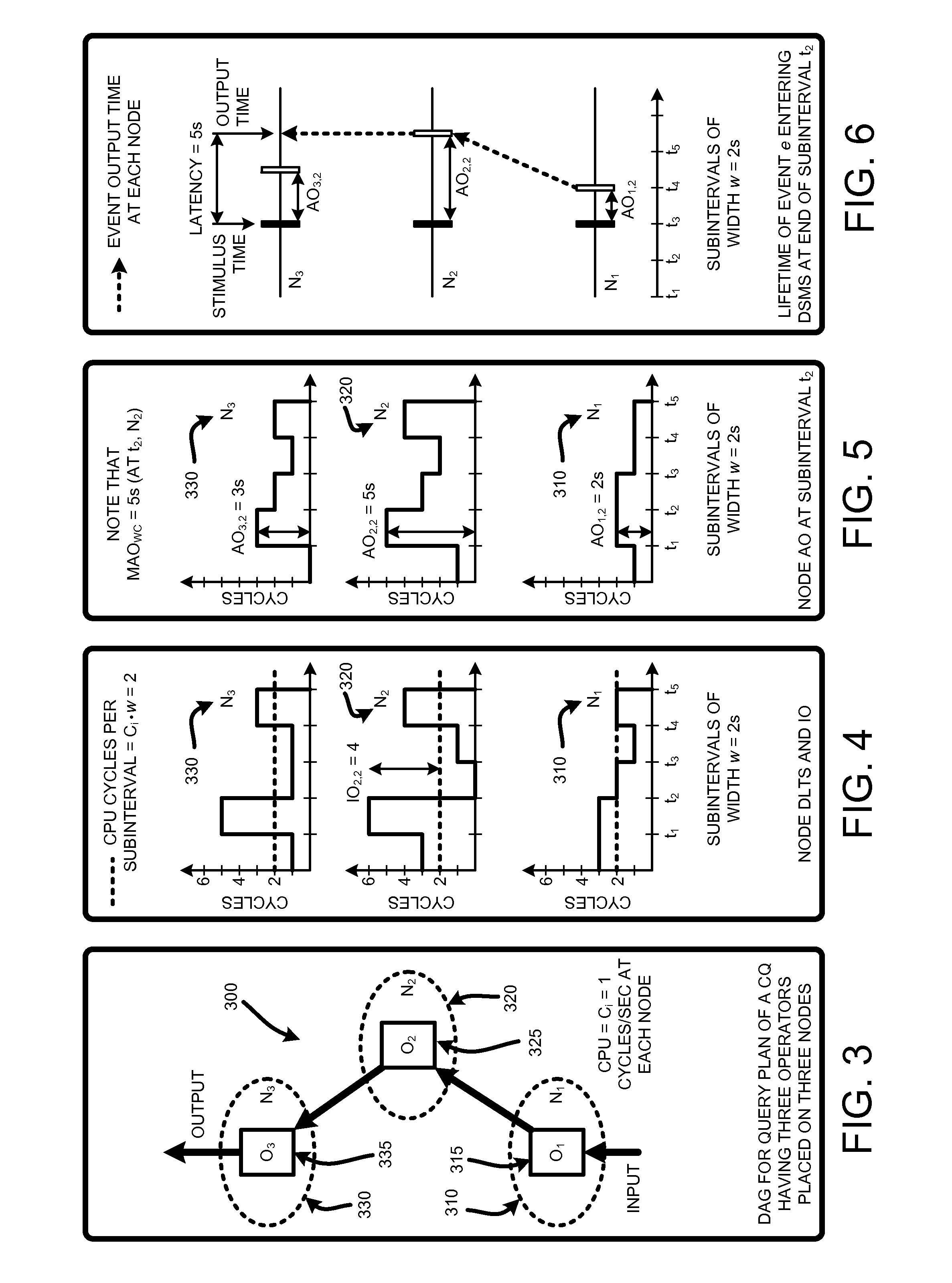Estimating latencies for query optimization in distributed stream processing
a distributed stream and optimization technology, applied in the field of query optimizers, can solve the problems of dsms system, conventional optimization for worst-case latency, insufficient time to be useful, etc., and achieve the effect of low computational overhead, high accuracy, and easy calculation of good operator placements
- Summary
- Abstract
- Description
- Claims
- Application Information
AI Technical Summary
Benefits of technology
Problems solved by technology
Method used
Image
Examples
Embodiment Construction
[0029]In the following description of the embodiments of the claimed subject matter, reference is made to the accompanying drawings, which form a part hereof, and in which is shown by way of illustration specific embodiments in which the claimed subject matter may be practiced. It should be understood that other embodiments may be utilized and structural changes may be made without departing from the scope of the presently claimed subject matter.
1.0 Introduction:
[0030]Latency is an important factor for many real-time streaming applications. In the case of a typical data stream management system (DSMS), latency can be viewed as an additional delay introduced by the system due to time spent by events waiting in queues and being processed by query operators. Ideally, query operators generate outputs at the earliest possible time, thereby reducing system latencies. Unfortunately, worst-case latencies can generally not be measured in sufficient time to be of use in a typical real-time DS...
PUM
 Login to View More
Login to View More Abstract
Description
Claims
Application Information
 Login to View More
Login to View More - R&D
- Intellectual Property
- Life Sciences
- Materials
- Tech Scout
- Unparalleled Data Quality
- Higher Quality Content
- 60% Fewer Hallucinations
Browse by: Latest US Patents, China's latest patents, Technical Efficacy Thesaurus, Application Domain, Technology Topic, Popular Technical Reports.
© 2025 PatSnap. All rights reserved.Legal|Privacy policy|Modern Slavery Act Transparency Statement|Sitemap|About US| Contact US: help@patsnap.com



